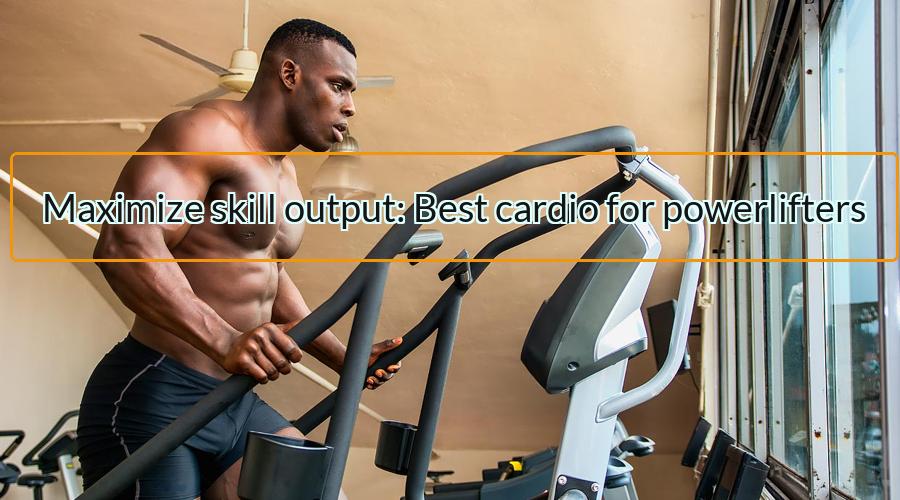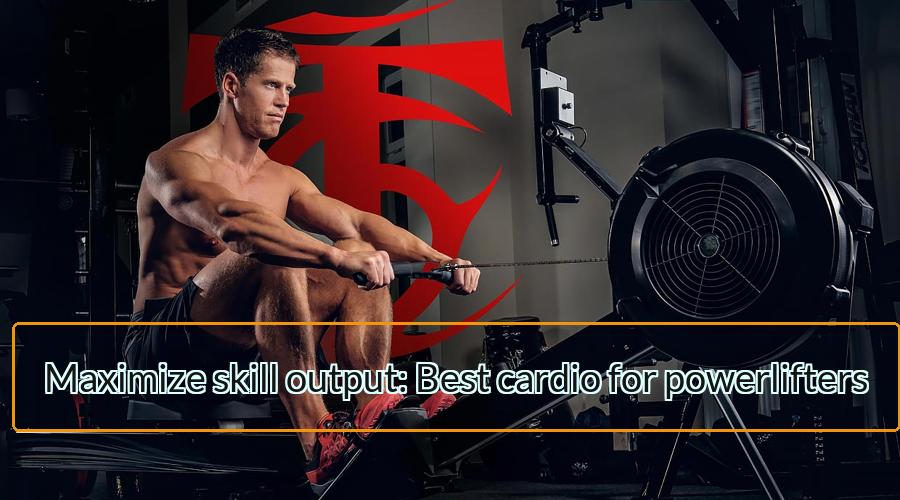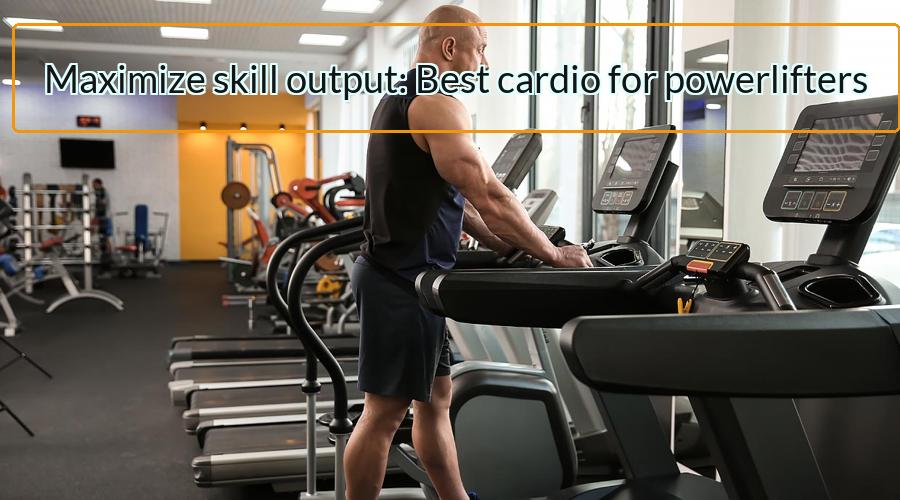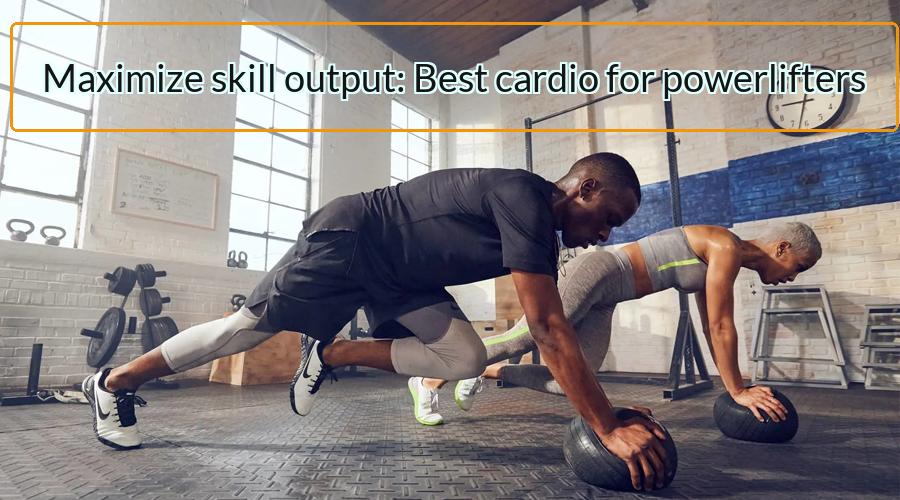
Whether you’re looking to compete in powerlifting or just want to maximize your strength output, adding cardio to your workout routine is an important part of the equation. Cardio has been shown to enhance muscle growth, improve overall health and reduce stress levels. However, it can be difficult for powerlifters to know what type of cardio is best for their goals. This article will discuss the best form of cardio for powerlifters looking to maximize their skill output.
Should powerlifters even do cardio?
Cardio has become an essential part of any fitness routine, but is it really necessary for powerlifters? Many powerlifters feel that cardio takes away from the time they can devote to strength training, and it’s true that too much aerobic work can reduce the effectiveness of lifting weights. However, there are certain types of cardio that are beneficial if done in moderation.
The best type of cardio for powerlifters is high-intensity interval training (HIIT). This involves short bursts of intense exercise with short rest periods in between. HIIT workouts will increase cardiovascular endurance without placing too much strain on the body’s energy reserves. In addition, since HIIT workouts generally take less time than steady-state exercises such as jogging or cycling, powerlifters will be able to fit them into their already busy schedules easily.
Discover the best cardio exercise for powerlifters
Powerlifting is a sport that requires dedication, strength, and most importantly power. The challenge of pushing the limits of one’s capabilities has been an inspiration to many athletes for centuries. Although it is important for powerlifters to focus on the main lifts in their workout routines, adding cardio training can provide numerous benefits such as improved endurance and heart health. But what exactly is the best cardio exercise for powerlifters?
When it comes to finding the best cardio exercise for powerlifters, there are several options available. High-intensity interval training (HIIT) workouts are one of the most popular choices as they require short bursts of high-intensity exercise followed by short periods of rest or low-intensity activity.

The best types of cardio for powerlifting
Powerlifting is an intense, strength-based sport that requires an individual to lift a maximum amount of weight for one repetition. However, powerlifters must also incorporate cardiovascular exercises into their training regimen in order to stay at peak physical performance. The best types of cardio for powerlifting depend on the needs of each athlete and can include low impact options such as walking or jogging and higher intensity forms like sprints or interval training.
For those who are just starting out on their fitness journey, low impact cardio is recommended as it allows the body to slowly build endurance over time while simultaneously increasing range of motion. Additionally, this type of exercise can help reduce chances of injury by slowly introducing the body to more strenuous activities as you gain confidence and experience with your workouts.
Read more about powerlifting over 50
How to incorporate cardio into your training program?
Cardio for powerlifters is a controversial subject that often sparks debate. Many lifters argue that cardio works against their goal of gaining strength and size, while others swear by it as an effective way to enhance performance. If you’re looking to incorporate cardio into your training program, here are some helpful tips.
First, it’s important to understand the role of cardio in a powerlifting routine. Cardio can help increase muscular endurance and reduce fatigue during heavy sets, allowing you to hit more reps with greater intensity. Additionally, the improved cardiovascular health associated with regular aerobic exercise can have positive effects on other aspects of your overall health – such as reducing stress and improving sleep quality.
Second, it’s best to structure your cardio sessions around your current goals and schedule.

Best cardio options for powerlifters
Cardio is an important part of any fitness routine, and powerlifters are no exception. Cardio helps to improve overall health and can help to strengthen the heart and lungs, which are key components of any successful powerlifting program. However, there is often a debate as to what type of cardio is best for a powerlifter.
There are several options when it comes to cardio for powerlifters. One popular option is interval training, which involves alternating periods of high-intensity activity with periods of rest or lower-intensity activity. This type of cardio has been shown to be effective in improving cardiovascular fitness while also helping to burn fat and build muscle mass. Another option for those looking for a more intense form of cardio would be sprinting or running up hills.
Main benefits of cardio for powerlifters
Cardio for powerlifters is becoming increasingly popular and with good reason. Cardio can provide a host of benefits that can help improve performance and overall health. For powerlifters, the main benefits of cardio include improved endurance, increased energy levels, improved mental focus, and better recovery times.
Incorporating a cardio regimen into your weekly routine as a powerlifter helps build your body’s capacity to handle longer workouts with higher intensity levels. This will lead to an increase in endurance so you can increase the amount of weight you are able to lift safely and effectively. An increased level of energy also comes with regular cardio exercise allowing more reps per set which in turn increases muscle growth potential during strength training sessions.

Worst cardio for powerlifter
Cardio and powerlifting are two activities that often contradict each other. Cardio, or aerobic exercise, is typically used to increase endurance while powerlifting focuses on building strength. While it may be beneficial for a powerlifter to include some cardio in their workout routine, there are certain types of exercises that can actually hinder their performance. Here are the worst cardio options for a powerlifter:
First on the list is steady-state cardio where you do an activity at one consistent speed for an extended period of time. This type of exercise puts too much stress on your body and can cause overtraining which leads to fatigue and injury. Additionally, it can leave little energy left for weight lifting workouts which will limit gains in muscle size and strength. Interval training is also a no-go as it can result in muscle loss due to its intensity level.
Why should you choose an elliptical for powerlifting?
For powerlifters looking for a way to improve their overall strength and performance, an elliptical is an ideal choice. Using an elliptical offers a unique cardiovascular workout that can be tailored to the individual lifter’s needs. By incorporating this type of cardio into a powerlifter’s routine, the athlete can gain better muscular coordination and balance, as well as increased stamina and endurance.
An elliptical allows for both forward and backward motion, which provides powerlifters with greater range of motion than other forms of cardio. The low-impact nature of the machine also makes it beneficial for those with joint problems or other mobility issues. Additionally, since the user is standing on two platforms during use rather than one, it is easier to maintain proper form while working out on an elliptical than it would be while running or using another type of exercise equipment.
Read more about intermediate powerlifting program
How often should powerlifters do cardio?
Powerlifters should do cardio at least 2-3 times per week. The amount and type of cardio will depend on the individual’s goals, but it should generally be low to moderate intensity for 20-30 minutes. High intensity interval training can also be beneficial for powerlifters looking to increase their aerobic capacity.
What types of cardio exercises are best for powerlifters?
Powerlifters should focus on exercises that involve short bursts of energy, such as sprints and HIIT workouts. Weighted sled pushes, hill sprints, and jump rope are all great options. Additionally, powerlifters should incorporate some aerobic exercises like running or cycling to improve their cardiovascular fitness. Finally, adding a few core exercises like planks and mountain climbers can help with overall stability and strength.
How can I make cardio more effective?
To make cardio more effective, focus on interval training. This means alternating between high-intensity bursts and lower intensity recovery periods. You can also vary your exercises to keep your body guessing and prevent boredom. Finally, don’t forget to warm up before and cool down after each session.